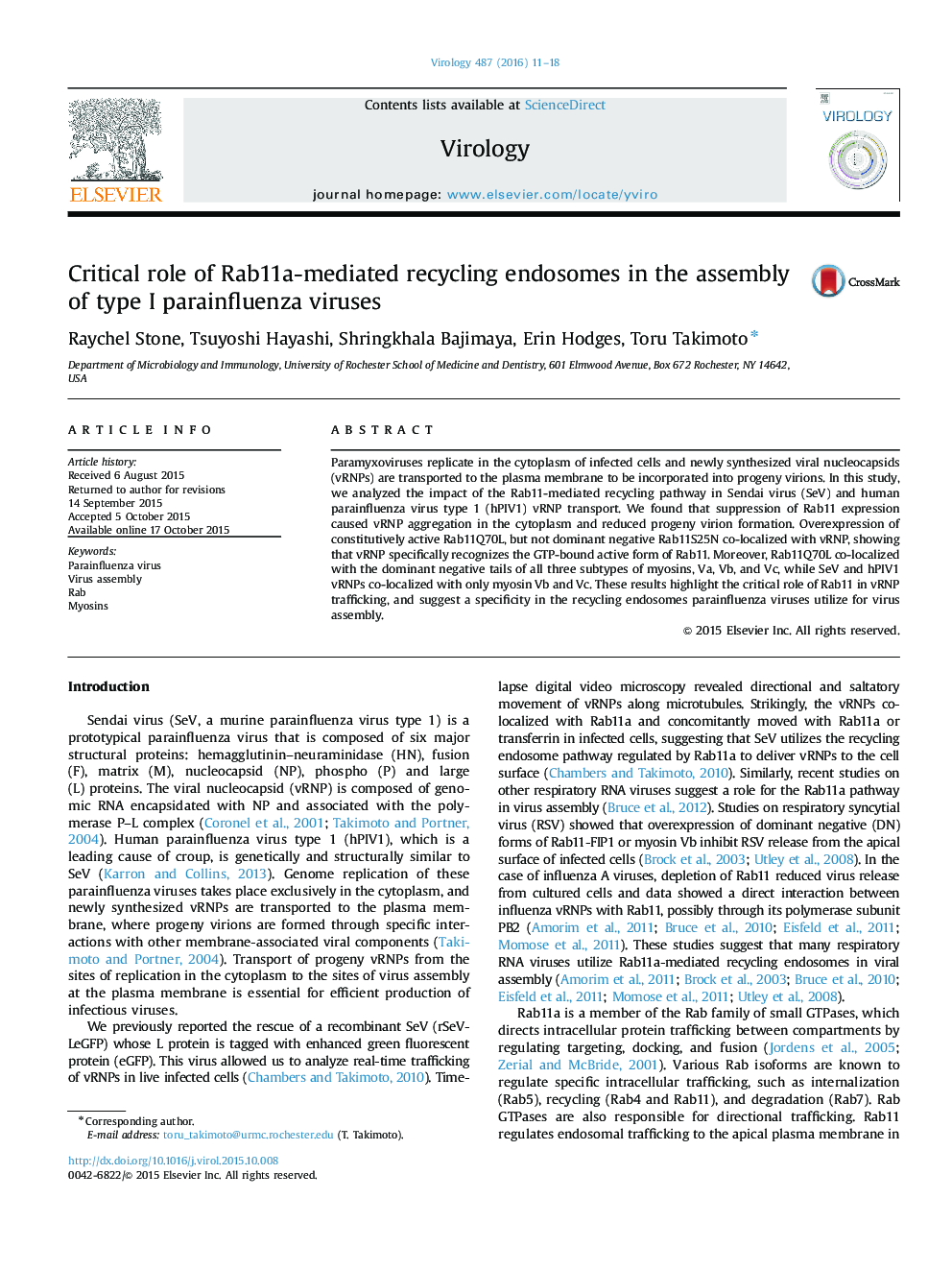| Article ID | Journal | Published Year | Pages | File Type |
|---|---|---|---|---|
| 6138804 | Virology | 2016 | 8 Pages |
â¢The role of Rab11 in vRNP transport of SeV and hPIV1 was analyzed.â¢Knockdown of Rab11 suppressed SeV production and induced vRNP aggregation.â¢SeV and hPIV1 vRNPs specifically recognized the GTP-bound active form of Rab11.â¢Rab4 does not likely contribute to vRNP trafficking of SeV or hPIV1.â¢Among the three subtypes, myosin Vb and Vc co-localized with vRNPs.
Paramyxoviruses replicate in the cytoplasm of infected cells and newly synthesized viral nucleocapsids (vRNPs) are transported to the plasma membrane to be incorporated into progeny virions. In this study, we analyzed the impact of the Rab11-mediated recycling pathway in Sendai virus (SeV) and human parainfluenza virus type 1 (hPIV1) vRNP transport. We found that suppression of Rab11 expression caused vRNP aggregation in the cytoplasm and reduced progeny virion formation. Overexpression of constitutively active Rab11Q70L, but not dominant negative Rab11S25N co-localized with vRNP, showing that vRNP specifically recognizes the GTP-bound active form of Rab11. Moreover, Rab11Q70L co-localized with the dominant negative tails of all three subtypes of myosins, Va, Vb, and Vc, while SeV and hPIV1 vRNPs co-localized with only myosin Vb and Vc. These results highlight the critical role of Rab11 in vRNP trafficking, and suggest a specificity in the recycling endosomes parainfluenza viruses utilize for virus assembly.
